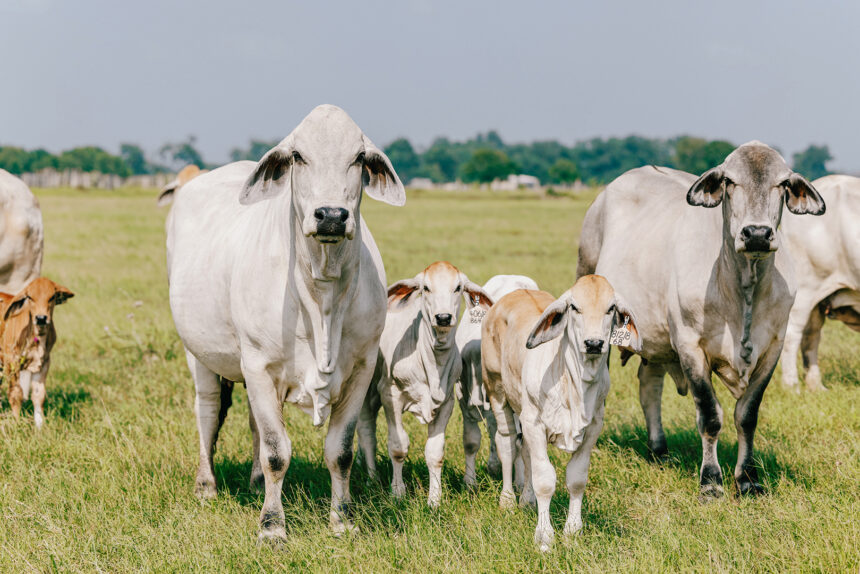Shane Brody
Feedlots do not purposefully discriminate against certain breeders. However, the animals may not always produce the carcasses that their market segment wants.
I was recently asked by a farmer who reads Farmer’s Weekly about the concept of terminal breeding. To answer him about what this constitutes, I dedicated an article to the concept.
I also covered the key differences between Bos taurus and B. indicus cattle breeds or types.
In short, the Taurus breeds, such as Herefords and Shorthorns, largely have their origins in Britain and Europe.
The Indicus breeds, such as Ngunis and Brahmans, have their origins in Asia or Africa.
These can largely be regarded as indigenous breeds. They have a valuable place in the broader local and global red meat value chain.
It suffices to say that the Indicus breeds show good adaptability to drought conditions and warmer climates.
Many are resistant to parasites such as ticks.
Taurus breeds may show better meat quality and growth rates, but are less suited to arid conditions.
Moreover, their furrier coats can pose problems where ectoparasites are prevalent.
It stands to reason, however, that the originators of breeds such as the Brangus (Brahman x Angus) and Braford (Brahman x Hereford) understood the value of including Indicus cattle into the new breeds that they developed.
The values of hybrid vigour would have played an important role in the formulation of such new breeds.
In addition, adaptability and hardiness in respect of droughts, surviving arid conditions and resistance to deadly parasites would have motivated founders of such breeds to enter outcrossing programmes.
These are intended to create breeds that are suited to particularly harsh environments, where ambient environmental temperatures can create problems for cattle farmers.
Indicus cattle are also more inclined to be non-selective eaters, and known to browse from trees and shrubs when grass is in short supply.
No right or wrong breed
The abovementioned farmer stated that he was crossing Indicus bulls onto Indicus cows, and had a good market for the cattle he produced. People seeking cattle for funerals were mentioned.
It is here that we, as farmers, need to understand there is no right or wrong breed when it comes to farming.
In addition, we need to consider what market segment we are aiming for as producers, and what animals are best-suited to the region in which we farm.
If you aim to sell to private people looking for cattle to be slaughtered for meat or for purposes such as cultural ceremonies, then breeds such as Ngunis, which fall into the Indicus species, are probably the best bet to farm.
This is because many people seeking cattle for customary purposes want horned animals.
Some even insist on the multicoloured skins that can be found in the Nguni breed.
If you are, on the other hand, aiming at supplying calves to big feedlots, then it would make more sense to breed the Taurus-type animals, which are more desirable to feedlots.
My 30 years of experience in cattle-buying and marketing tells me that purebred Nguni calves will largely be discriminated against within the formalised feedlot sector.
This is not to say that feedlots are purposefully discriminating against Nguni breeders, but such calves may not always produce the carcasses that their market segment want.
Such calves may grow slower than Taurus or ‘beef breed’ calves, their meat cuts and carcass shape may be different.
Their meat may be of a different texture, with less fat marbling, as an example.
I also mentioned to the above reader that if he had a winning recipe by breeding Nguni crosses, he should stick to this breeding programme.
Ngunis have a valuable and important place in South African red meat production.
You need to think of alternative or niche markets outside of the widely-used feedlot value chain.
This may mean that you rather keep your Nguni or other Indicus breed calves and raise them into oxen that can be sold into the abattoir or informal (private buyer) market that does not usually discriminate against Indicus breeds.
In the case of most abattoirs, this is as long as the carcasses of such animals meet the minimum required conformation, weight and body fat/grading expectations.
While Taurus-type calves can be marketed to feedlots at six to eight months of age, raising oxen to minimum requirements expected by abattoir owners or members of the public may take three to four years to achieve.
-www.farmersweeklwy.co.za
*Shane Brody is involved in an outreach programme aimed at transferring skills to communal farmers.


